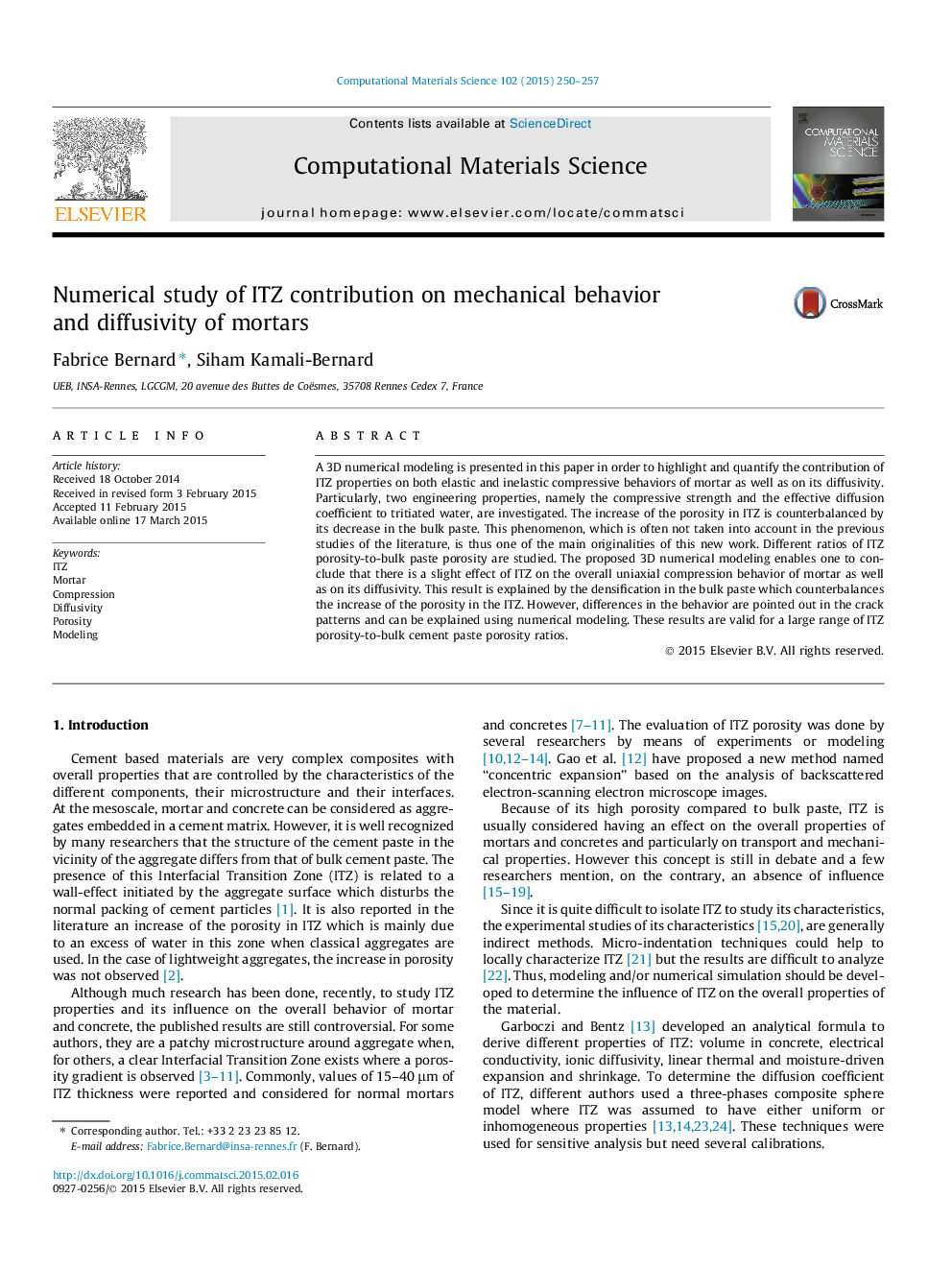| Article ID | Journal | Published Year | Pages | File Type |
|---|---|---|---|---|
| 1560285 | Computational Materials Science | 2015 | 8 Pages |
•A 3D numerical modeling of mortar enables to analyze the effect of a well adherent ITZ.•Young’s modulus, compressive strength and diffusivity of mortar are not significantly influenced by the presence of ITZ.•The increase of the porosity in ITZ is counterbalanced by its decrease in the bulk matrix.
A 3D numerical modeling is presented in this paper in order to highlight and quantify the contribution of ITZ properties on both elastic and inelastic compressive behaviors of mortar as well as on its diffusivity. Particularly, two engineering properties, namely the compressive strength and the effective diffusion coefficient to tritiated water, are investigated. The increase of the porosity in ITZ is counterbalanced by its decrease in the bulk paste. This phenomenon, which is often not taken into account in the previous studies of the literature, is thus one of the main originalities of this new work. Different ratios of ITZ porosity-to-bulk paste porosity are studied. The proposed 3D numerical modeling enables one to conclude that there is a slight effect of ITZ on the overall uniaxial compression behavior of mortar as well as on its diffusivity. This result is explained by the densification in the bulk paste which counterbalances the increase of the porosity in the ITZ. However, differences in the behavior are pointed out in the crack patterns and can be explained using numerical modeling. These results are valid for a large range of ITZ porosity-to-bulk cement paste porosity ratios.
Graphical abstractFigure optionsDownload full-size imageDownload as PowerPoint slide
